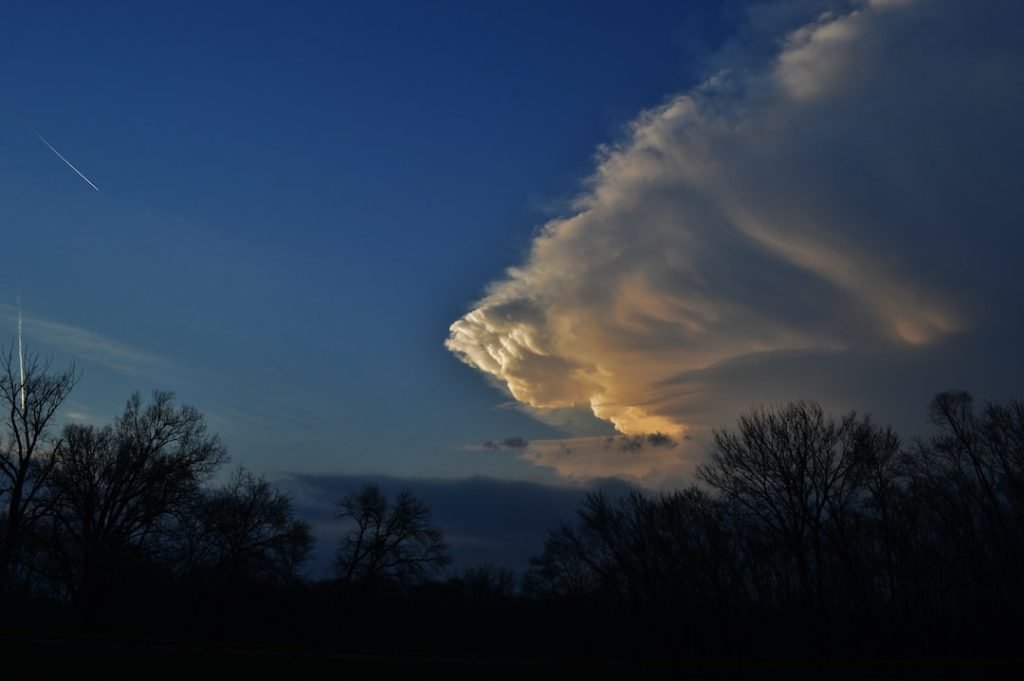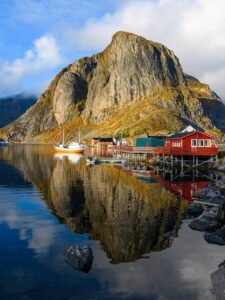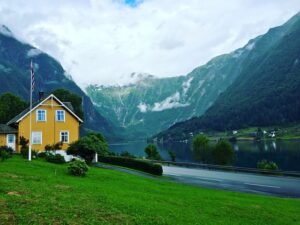

10 Norwegian Words for Weather and Seasons
Weather plays a significant role in the daily lives of Norwegians. With its diverse climate and stunning natural landscapes, Norway experiences a wide range of weather conditions throughout the year. Whether you are planning a trip to Norway or simply want to expand your language skills, learning Norwegian weather vocabulary is essential. It not only allows you to understand and describe the weather accurately but also helps you connect with the local culture and people.
Table of Contents
ToggleKey Takeaways
- Norwegian weather vocabulary is important for understanding the country’s climate and culture.
- Norway has four distinct seasons: spring, summer, autumn, and winter.
- Weather plays a significant role in Norwegian culture, from outdoor activities to daily life.
- Common Norwegian words for sunny weather include sol, varmt, and sommer.
- Describing cloudy and overcast weather in Norwegian can be done with words like skyet and overskyet.
Understanding the four seasons in Norway
Norway experiences four distinct seasons: spring, summer, autumn, and winter. Each season brings its own unique weather patterns and changes. Spring in Norway is characterized by milder temperatures, longer days, and the emergence of colorful flowers and blossoms. Summer is the warmest season, with temperatures ranging from mild to hot, depending on the region. Autumn brings cooler temperatures, vibrant foliage, and occasional rain showers. Winter is the coldest season, with snowfall and freezing temperatures being common across the country.
The importance of weather in Norwegian culture
Weather has a profound impact on daily life in Norway. Norwegians are known for their love of outdoor activities and nature, and the weather plays a crucial role in determining what activities are possible on any given day. From hiking and skiing to fishing and sailing, Norwegians plan their leisure time around the weather forecast. Additionally, weather-related traditions such as Midsummer bonfires and Christmas celebrations are deeply ingrained in Norwegian culture.
Common Norwegian words for sunny weather
| Word | Translation | Definition |
|---|---|---|
| Sol | Sun | The star around which the Earth orbits, whose light and heat provide energy for life on Earth. |
| Varmt | Warm | Having or giving out a moderate degree of heat, as perceived by the senses. |
| Strand | Beach | A pebbly or sandy shore, especially by the ocean between high- and low-water marks. |
| Sommer | Summer | The warmest season of the year, in the northern hemisphere from June to August and in the southern hemisphere from December to February. |
| Grønt gress | Green grass | Grass that is green in color, often found in fields or lawns. |
When it comes to sunny weather, Norwegians have several words and phrases to describe clear skies and sunshine. The word “sol” means sun in Norwegian, and you can use it to describe a sunny day by saying “det er sol” (it is sunny). Other common words include “varmt” (warm), “klar himmel” (clear sky), and “solstråler” (sun rays). Norwegians also have phrases to describe warm and sunny days, such as “det er en varm sommerdag” (it is a warm summer day) or “det er strålende sol” (it is brilliant sunshine).
Describing cloudy and overcast weather in Norwegian
Cloudy and overcast days are not uncommon in Norway, especially during the autumn and winter months. To describe such weather, you can use words like “skyet” (cloudy), “overskyet” (overcast), or “gråvær” (gray weather). Norwegians often use phrases like “det er en grå og trist dag” (it is a gray and gloomy day) or “himmelen er dekket av skyer” (the sky is covered with clouds) to describe these weather conditions.
Norwegian vocabulary for rainy days

Rainfall is a common occurrence in Norway, particularly along the coast and in the western regions. To describe light rain, you can use the word “regn” (rain), while heavy rain can be described as “kraftig regn” or “tungt regn.” Phrases like “det regner” (it is raining) or “det pøser ned” (it is pouring down) are commonly used to talk about rainy weather in Norwegian.
Snowy weather words in Norwegian
Norway is famous for its snowy landscapes, especially during the winter months. To describe light snowfall, you can use the word “snø” (snow), while heavy snowfall can be described as “kraftig snøfall” or “tungt snøfall.” Phrases like “det snør” (it is snowing) or “det er snødekt” (it is snow-covered) are commonly used to talk about snowy weather in Norwegian.
How to talk about wind and storms in Norwegian
Wind and storms are also common weather conditions in Norway, particularly along the coast. To describe windy weather, you can use words like “vind” (wind) or “blåser” (blowing). Norwegians often use phrases like “det blåser kraftig” (it is blowing strongly) or “det er storm” (it is stormy) to describe windy or stormy weather.
Seasonal vocabulary for spring and autumn in Norway
Spring and autumn are transitional seasons in Norway, characterized by changing weather patterns. In spring, you can use words like “vår” (spring), “blomster” (flowers), and “grønn” (green) to describe the emergence of new life and the blooming of flowers. In autumn, words like “høst” (autumn), “fargerike blader” (colorful leaves), and “kjølig” (cool) can be used to describe the changing colors of foliage and cooler temperatures.
Celebrating Norwegian winter with weather-related words and phrases
Winter is a special time in Norway, with a wide range of weather-related activities and traditions. To describe winter weather, you can use words like “vinter” (winter), “snø” (snow), and “kulde” (cold). Norwegians often use phrases like “det er vinterlig vær” (it is wintry weather) or “det er bitende kaldt” (it is bitterly cold) to describe the winter season. Winter activities such as skiing, ice skating, and building snowmen are also an integral part of Norwegian culture.
Learning Norwegian weather vocabulary is essential for anyone interested in understanding and experiencing the diverse climate of Norway. It not only allows you to accurately describe the weather but also helps you connect with the local culture and people. Whether you are planning a trip to Norway or simply want to expand your language skills, practicing weather-related words and phrases in everyday conversation will enhance your understanding and appreciation of this beautiful country. So, next time you find yourself in Norway, don’t forget to check the weather forecast and impress the locals with your knowledge of Norwegian weather vocabulary.
If you want to learn Norwegian, you can register for classes here. We look forward to hearing from you and helping you become fluent in Norwegian!
Refer a friend and get $150. Join the program here
If you want to learn Norwegian, you can register for classes here. We look forward to hearing from you and helping you become fluent in Norwegian.





